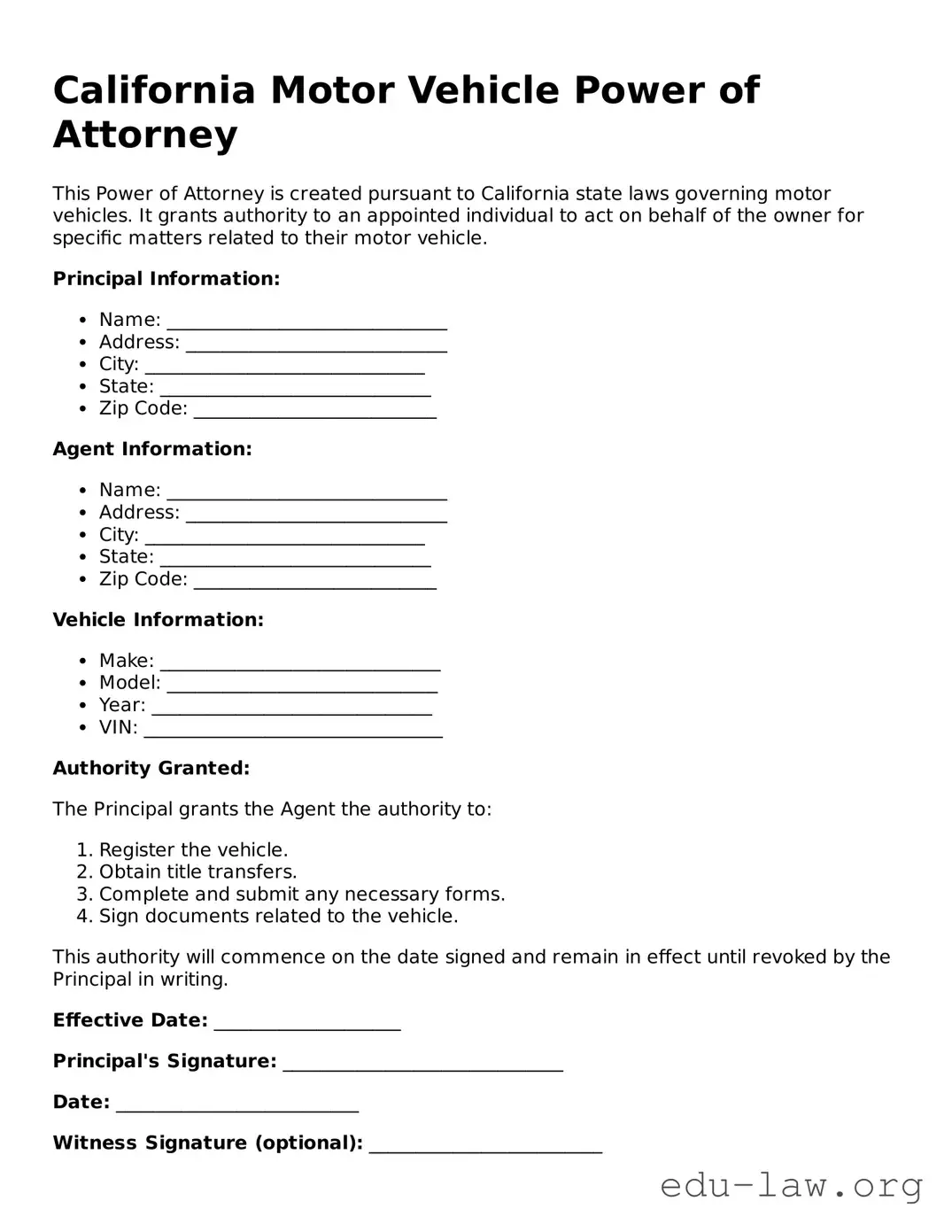What is a California Motor Vehicle Power of Attorney form?
The California Motor Vehicle Power of Attorney form allows you to appoint someone else to handle tasks related to your vehicle on your behalf. This could include signing documents needed for vehicle registration, transferring ownership, or any other vehicle-related matters. If you’re unable to complete these actions yourself, this form empowers another person to act in your stead.
Who can be appointed as an agent using this form?
Anyone you trust can be appointed as your agent. This can be a family member, friend, or professional. However, it’s essential to choose someone responsible enough to manage your vehicle matters effectively. The person you select must be at least 18 years old and capable of understanding their responsibilities.
How do I complete the California Motor Vehicle Power of Attorney form?
To fill out this form, include your details as the principal, along with the details of the agent you are appointing. Be sure to describe the powers you are granting them clearly. Once completed, both you and the agent should sign the form to validate it. It’s also a good idea to keep a copy for your records after it’s submitted to the DMV.
Does the form need to be notarized?
The California Motor Vehicle Power of Attorney form does not require notarization. However, depending on where you submit the form or if there are specific transactions involved, some jurisdictions might have additional requirements. Always check with the relevant authority to ensure compliance.
When does the Power of Attorney take effect?
This Power of Attorney is effective as soon as it’s signed and submitted, unless you specify otherwise. If you want it to take effect only under certain conditions, such as if you become incapacitated, you will need to make this clear on the form and ensure your agent is aware of your wishes.
Can I revoke the Power of Attorney once it’s been granted?
Yes, you can revoke the Power of Attorney at any time, as long as you are mentally capable of doing so. To revoke it, simply provide a written notice to your agent and any relevant authorities, such as the DMV. It’s also good practice to complete a new Power of Attorney form if you are appointing someone else.
Are there any fees associated with filing this form?
There are typically no fees for simply completing the form itself, but there may be fees for any transactions conducted via the Power of Attorney at the DMV, such as title transfers or registration changes. Always check the latest fee schedule from the DMV to be fully informed.
